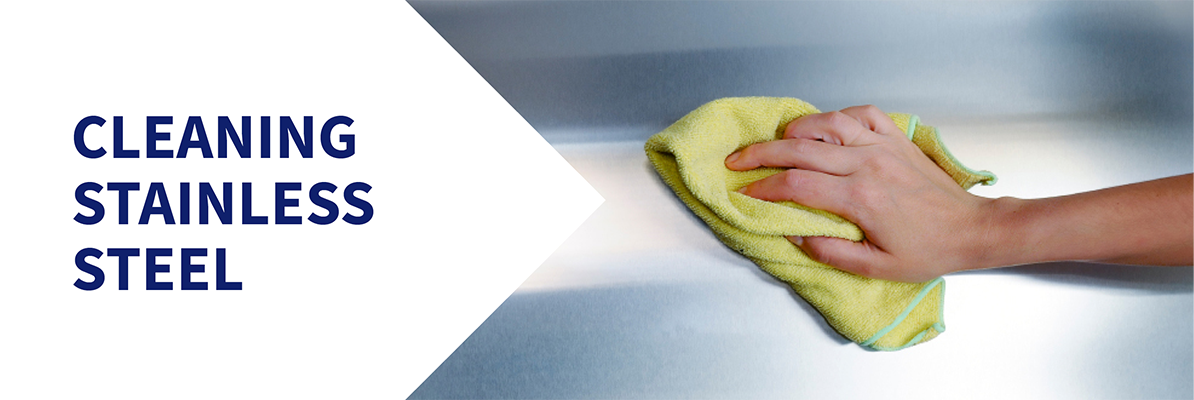
CLEANING STAINLESS STEEL
Quick and easy tips for keeping that shine
Stainless Steel is known for its ability to be a clean surface that resists corrosion and rust. Dirt, dust and grime, however, put stainless steel at risk for corrosion and rust. Luckily, stainless steel is a very resilient surface that responds well to cleaning, as long as certain rules are followed.
What to use
Water and a cloth
Routine cleaning can be achieved by using clean warm water and a cloth. This is the least risky option for cleaning stainless steel. Dry thoroughly with a towel or cloth to prevent water spots (which can be caused by the minerals in water). Make sure to wipe in the directions of the polish lines.
Mild detergent (dishwashing liquid) and a cloth
For cleaning that needs more power, mild detergent and warm water will work well without damaging the stainless steel. After cleaning wipe the surface dry with a soft absorbent cloth to prevent staining or spotting.
Glass cleaner for fingerprints
If a mild detergent or dishwashing detergent doesn’t shift unsightly fingermarks, get rid of them with a bit of glass cleaner on a soft cloth. Rinse thoroughly and towel dry.
Stainless Steel Cleaner
If the stainless steel has staining or scratching, or the stainless steel needs to be polished, a stainless steel cleaner may be a good option. Some of these cleaners and polishes can help minimise scratching and remove stains. Be sure to read the directions on the stainless steel cleaner first and test on an inconspicuous spot. Rinse thoroughly and towel dry.
Rust marks
Apply cream cleanser with a soft damp cloth and rub gently. If the mark still wont shift, it might be necessary to use a stainless steel cleaner.
What to avoid
Do not use abrasive cleaners that will scratch the surface
Depending on the surface finish of the stainless steel, abrasive cleaners can cause scratching.
Don’t forget to rinse
Gritty or dirty water or residue from cleaning solutions left on a stainless steel surface can stain or damage the finish.
Do not use cleaners containing chlorine
While it may be second nature to bleach everything, stainless steel and chlorine don’t mix. Stay away from bleach or hydrochloric acid based cleaning products when cleaning stainless steel.
Do not use steel wool or steel brushes
These products leave little particles in the surface of the steel and inevitably these particles begin rusting and staining the surface of the steel. They can also excessively scratch the surface. Also avoid using scourers and cleaning cloths that have been used on ordinary steel.
Don’t go against the grain
Always rub stainless steel in the same direction as the grain. Rubbing against the grain will spoil the finish and stainless will lose its shine. Worse, rubbing against the grain can damage the surface by creating microscopic crevices where dirt can collect. This can lead to corrosion spots.
Do not assume it’s the cleaner
If there is some spotting or staining, and all of the rules have been followed, it may not be the cleaner. Water, especially hard water, can leave spotting and staining on stainless steel surfaces. Towel dry to help end this problem.
Routine cleaning prevents any stubborn stains building up. As long as stainless steel is properly cleaned, there should not be any risk of rust, corrosion, or other stains to deal with.
An excellent soft cleaning cloth to use is the Microfibre Cleaning Cloth.
It is important to note that the recommendations provided are of a general nature and should not be relied on for specific applications without first securing competent advice. Information courtesy of Adbourne Publishing and the Australian Stainless Steel Development Association.



